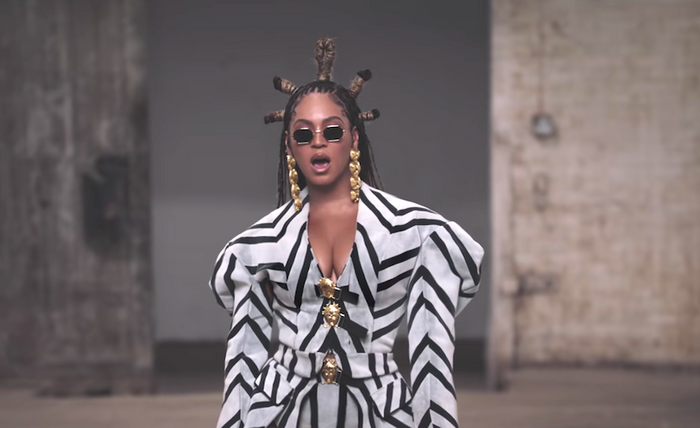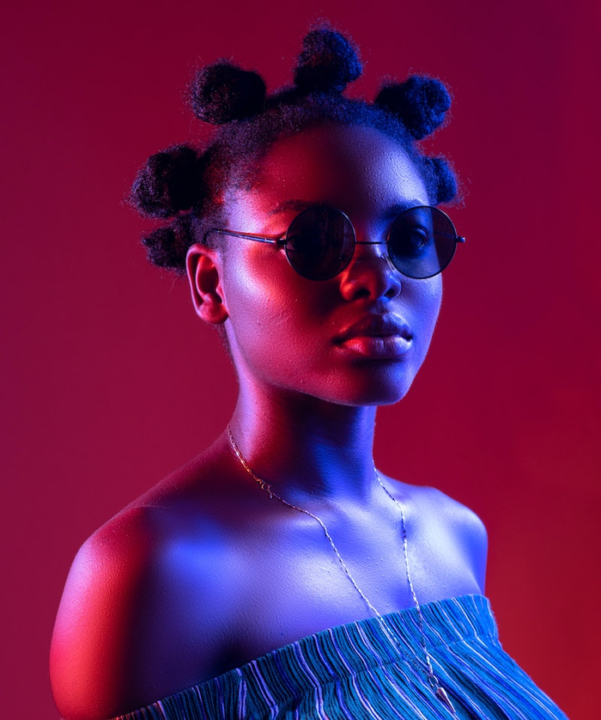Photo by PICHA Stock
One of the most iconic and enduring hairstyles that have originated from African traditions is the Bantu Knots. The hairstyle involves twisting hair into knots, which creates a striking pattern on the scalp.
Bantu Knots are commonly used to protect natural and relaxed hair, and they also create beautifully defined curls that suit any hair texture. With Bantu knots, hair is sectioned into as many parts as desired, twisted, and then wrapped around themselves to form tyre-like knots on the head. The knots are then either decorated with ornaments or jewelry or simply left to stun in their rolled-up glory.
When we think of natural hairstyles with rich history and lasting popularity, Bantu knots always come to mind. This hairstyle has been around for hundreds of years. It can be traced back to the Zulu (Nguni) tribes of Southern Africa, where they held great meaning. This hairstyle is also known as Zulu knots.
According to the South Africa History Organization (SAHO), the term Bantu is used to describe 300 to 600 ethnic groups within southern Africa that speak the Bantu language. The word Bantu was used as a derogatory term to marginalize Southern Africans. Eventually, it returned to its original meaning about the spoken language and its people.
The Bantu knots, like many other African hairstyles, are deeply intertwined with cultural heritage, personal expression, and resistance to societal norms. These hairstyles are a reflection of a rich history of African traditions, beliefs, and values, and play an important role in Black identity. It is more than just a hairstyle for Africans, as it allows individuals to connect with their ancestors and express pride in their heritage.
How Bantu knots have been adapted to suit modern fashion trends
Black communities around the world have always created hairstyles that are uniquely their own, and the Bantu knot is one of such. Over the years, this hairstyle has moved from being just about tradition to becoming a fashion statement embraced by white models, and non-Black and Black celebrities. Celebrities like Rihanna, Adele, and others have been spotted rocking this traditional African hairstyle, both on and off the red carpet.
Rihanna: The singer has slayed Bantu knots at different times that we’ve lost count of how many times. One time, she showed up at the IHeartradio Music Awards rocking this hairstyle which she shared on her Instagram page with the caption “Gheto”.
Beyoncé: Queen Bey made Bantu knots look effortlessly regal when she combined them with braids for her “Already” music video.

Screencapture of Beyoncé wearing Bantu knots. Source: Youtube | Beyoncé
Tracee Ellis: As far back in 2016, Tracee Ellis Ross rocked Bantu knots to the opening of the Refugee Exhibit in California.
Cardi B: We have also seen the rapper sporting Bantu knots. She arrived on the red carpet for Hustler’s movie press event rocking this traditional African hairstyle.
Khloe Kardashian: This is another celebrity who has been spotted wearing this hairstyle. Khloe, however, faced the ire of Black Twitter she shared a photo of herself wearing Bantu knots with a caption that read: “Bantu babe.”
Adele: Another celebrity who had netizens talking when she rocked Bantu knots was Adele. The singer attended the Notting Hill Carnival and posted a picture of her wearing the traditional African hairstyle. After posting the photo on social media, she was accused of cultural appropriation for using the Bantu knots.

Photo by Chidimma peace
Tips on how to create and maintain this hairstyle
These cute protective hairstyles are small coiled buns made by twisting small sections of hair and putting them in a secure knot. They can be created on any hair type, whether it’s blown out, relaxed, or going through the transition process. They can even be created on braids, twists, and dreadlocks. Here are simple steps on how to achieve the Bantu knots:
- Divide your hair into as many sections, depending on how many Bantu knots you want to create and the thickness of your hair. Secure each section with hair ties or small bands.
- Moisturize your hair. This is optional but is helpful if you’re working with dry hair.
- Create the knot by roll-twisting each section of hair tightly in a clockwise direction. As you twist, the hair will naturally coil into a knot against your scalp.
- Secure the knot by tucking it under the Bantu knot. You can also use hairpins to secure the ends of the knot from unraveling if needed. And there you have it – beautifully created Bantu knots!
Its maintenance is as easy as taking care of your hair. All you have to do is sleep with a satin or silk scarf or pillowcase, wear a shower cap, wrap your head in a plastic bag to keep your knots dry when in the shower, and avoid activities that may expose your hair to moisture.
Misconceptions and stereotypes associated with African hair
African hair is diverse, beautiful, and unique, but it has been subjected to high scrutiny for years. It has often been the subject of misconceptions and stereotypes. Here are some common ones:
- Natural African hair is unprofessional in professional settings
- African hair is difficult to manage.
- All African hair Is kinky or coarse
- It doesn’t grow long
- It is inferior to other types of hair
All these are false narratives. With proper care and the right products, African hair is easily manageable and can grow long, just like any other hair type.





